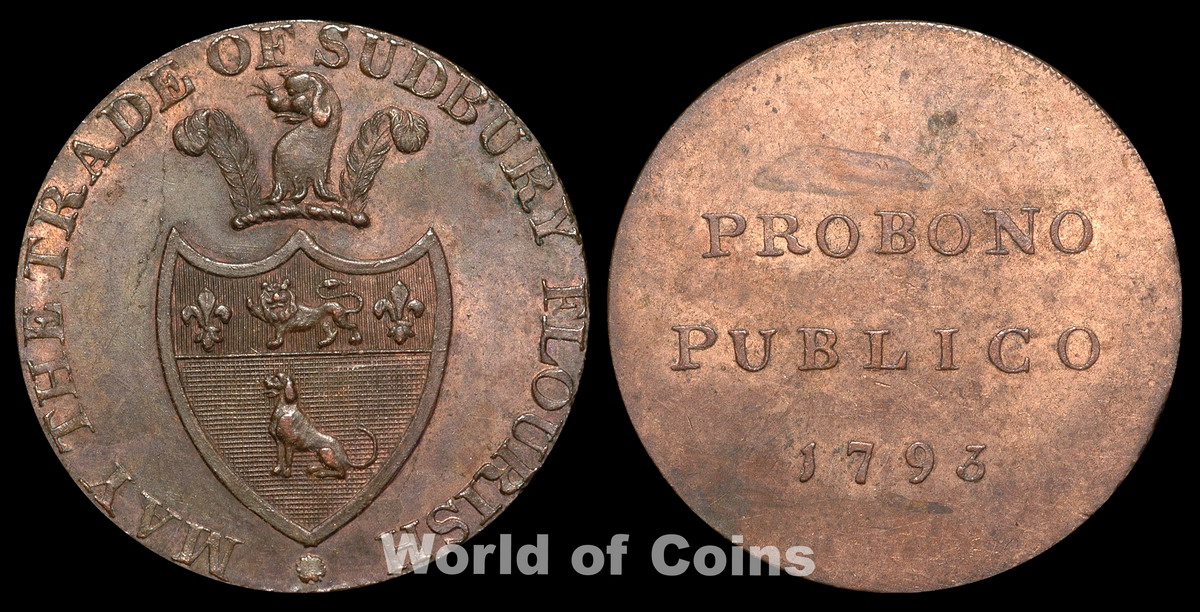
Online collections
monedastodas.com
All collections » Tokens » Sudbury Halfpenny
The obverse shows the crossed coat of arms of the city of Sudbury: a seated silver talbot on a dark sable at the bottom of the shield, a golden lion walking between two golden lilies on red at the top of the shield. Above the shield on the wreath is the head of a talbot between two vertical silver ostrich feathers. The circle legend reads "MAY THE TRADE OF SUDBURY FLOURISH".

On the reverse side, the inscription on a
smooth field: "PRO BONO PUBLICO" (For the Public Good) and the year "1793".
Edge inscription: "PAYABLE AT GOLDSMITH &
SONS SUDBURY .xxx." Goldsmith and sons were tailors and drapers in
Sudbury, partly in Suffolk, partly in Essex.
Engraver - Wyon, manufacturer - Kempson. Issued
15 cwts (1 cwts = 100 lb = 45.359237 kg).
The coat of arms was issued to the city
by the King of Arms (Clarencieux King of Arms) Robert Cook on September 20,
1576, as evidenced by the entry in the original grant of the city archive.
The Talbot is an early breed of now
extinct hunting dog believed to have been introduced to England by William the
Conqueror and is the progenitor of the modern bloodhounds and beagles. Her
image on the coat of arms was used to enhance the dignity of the Borough of
Sudbury when, in 1554, it received a charter from Queen Mary outlining its
rights and privileges. Probably the image of the talbot was taken
from the coat of arms of the Theobald family. Simon Theobald of
Sudbury 1316-1381, born in 1318 into a wealthy family of a local cloth merchant,
was Archbishop of Canterbury and Lord Chancellor. These titles were
a great honor not only for Simon himself, but also for his hometown of Sudbury,
because now he was the most powerful man in England after the King.
In 1381, the Peasants' Revolt broke out,
and Simon was named one of the main reasons for all their troubles. An
angry mob of peasants stormed the Tower of London and beheaded Simon. His
head was put on a stake and put on public display on London Bridge - a fate that
was usually awarded to traitors. Subsequently, the body was buried
in Canterbury Cathedral, and the head was brought to the hometown of Sudbury in
the church of St. Gregory, in the hope that it would become a place of
pilgrimage.